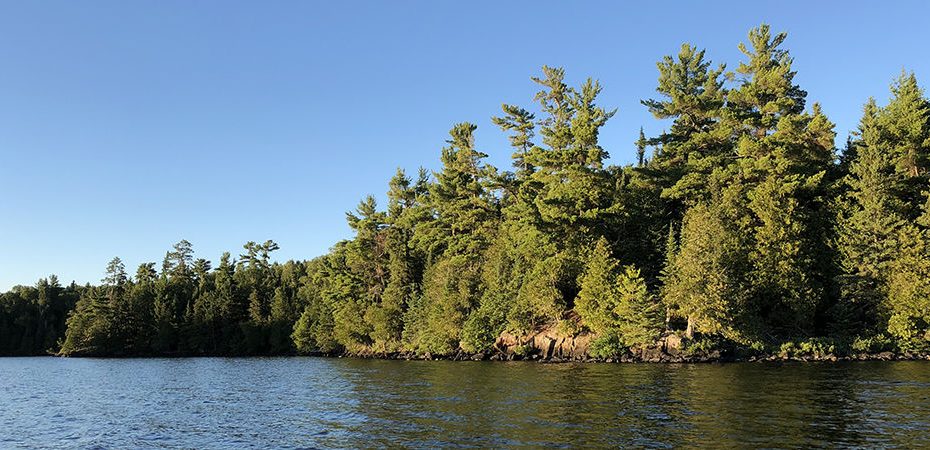Less than 11 percent of Ontario’s lands and waters are considered protected, despite the existence of areas of great ecological, cultural, and community value that deserve protection.
Many of these areas are featured on the Protected Places Story Map, a collective vision developed by Ontario Nature and several key partners. Each area featured on the story map comes with its own history and ecological characteristics that make it an obvious case for protection.

Wolf Lake
For decades, the Save Wolf Lake Coalition has sought the protection of the largest remaining old growth red pine forest in the world – the Wolf Lake Forest Reserve. Located northeast of Sudbury in the greater Temagami region, this rare forest is a haven for wildlife and key to the ecological health of the surrounding watershed. Its ancient red pines, some of which are more than 300 years old, are an important draw for visitors and provide an opportunity to experience and learn about the functions and qualities of old-growth forests.
Despite its “forest reserve” status, which prohibits logging, Wolf Lake remains at risk from mineral exploration and mining.
Wolf Lake is an obvious candidate for protection and would add 1,600 ha to Ontario’s protected and conserved areas. Please sign our Action Alert to call for its immediate protection.

Farabout Peninsula
The Farabout Peninsula is a roadless area of mature forests, bogs, rocky lakeshore, and extensive shoreline wetlands located on Eagle Lake west of Dryden in northwestern Ontario. In 2022 the Eagle Lake Farabout Peninsula Coalition partnered with Eagle Lake First Nation to declare the peninsula as a “Healing Forest” with support from the David Suzuki Foundation. This designation added it to a network of forests across Canada dedicated to honoring residential school victims and survivors.
Thanks to years of advocacy by the coalition, the forests of the Farabout Peninsula have been saved from logging until 2031. The coalition is now seeking permanent protection for the peninsula in cooperation with Eagle Lake First Nation.
“From the air, Farabout Peninsula looks like an island…[It has] an intact forest canopy with a high diversity of forest ecosites including towering white pines, old growth white cedar stands and black ash swamps”
– Darlene Salter, Co-chair, Farabout Peninsula Coalition.

Highlands Corridor
The Highlands Corridor extends across southern Haliburton and northern Peterborough counties, within the territory of the Williams Treaties First Nations.
The area comprises over 100,000 hectares of forest, wetlands and rock barrens, rich in species at risk and significant habitats. It connects three provincial parks (Queen Elizabeth II Wildlands, Kawartha Highlands, and Silent Lake) providing safe passage for species to move among them as needed.
Advocated for by the Haliburton Highlands Lands Trust, this expanse of rich wetlands, diverse wildlife communities, and deep carbon deposits requires permanent protection.

Next Steps
To add your voice to the growing call for the Government of Ontario to expand protected areas across the province, consider signing our Action Alert urging Minister of the Environment, Conservation and Parks to implement recommendations from the government-appointed expert working group on protected areas.
By permanently protecting these sites, Ontario could make a meaningful contribution to the 30 by 30 target and help prevent further biodiversity loss. To learn more, visit the Story Map.
Resources
Ontario’s Protected Areas Working Group Report: Seven Things You Need to Know, Blog
4 New Tipsheets Help You Flex Your Democratic Muscle for Nature, Blog
30 by 2030: Ten Things you Should Know About Canada’s New Protected Areas Targets, Blog
Strategy needed now to implement expert recommendations on protected areas, Blog
